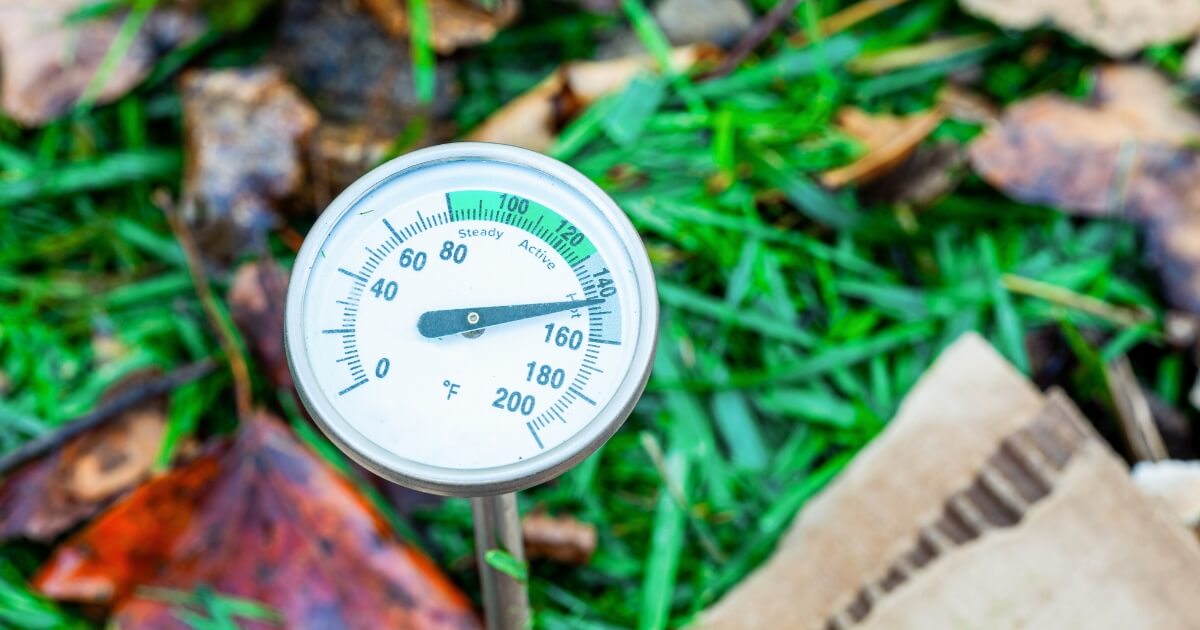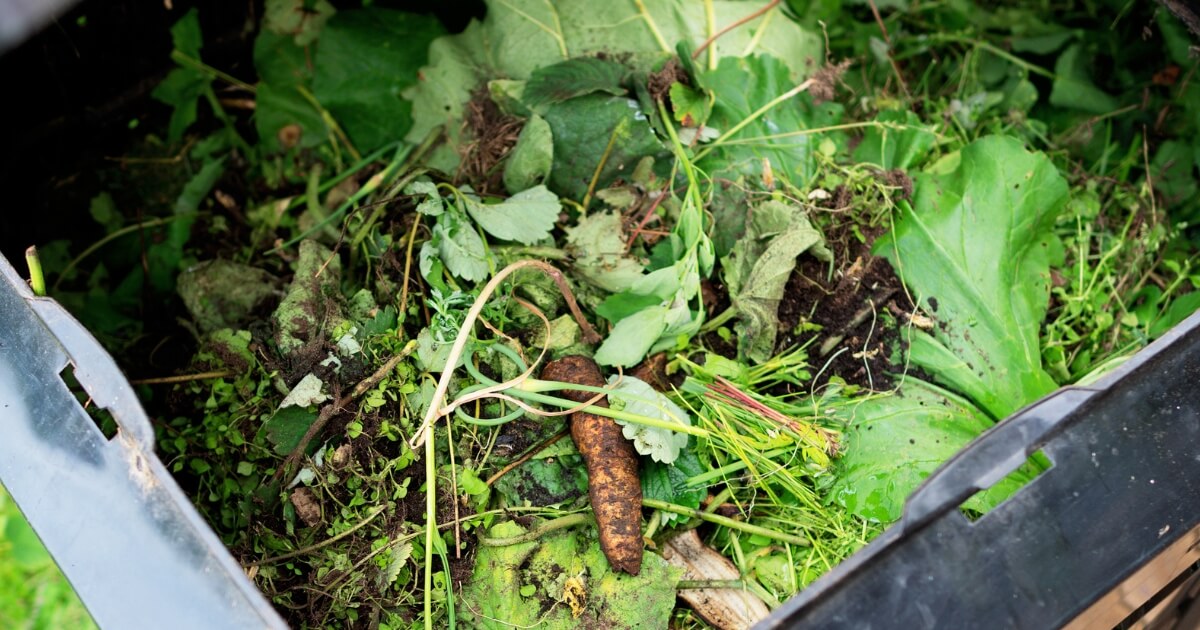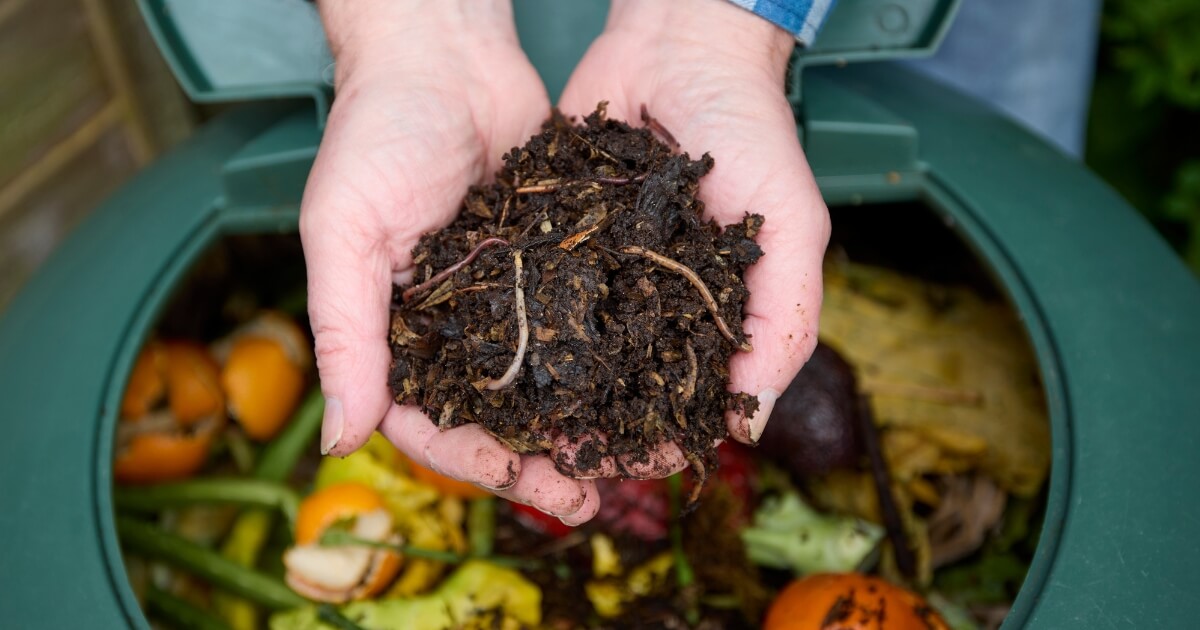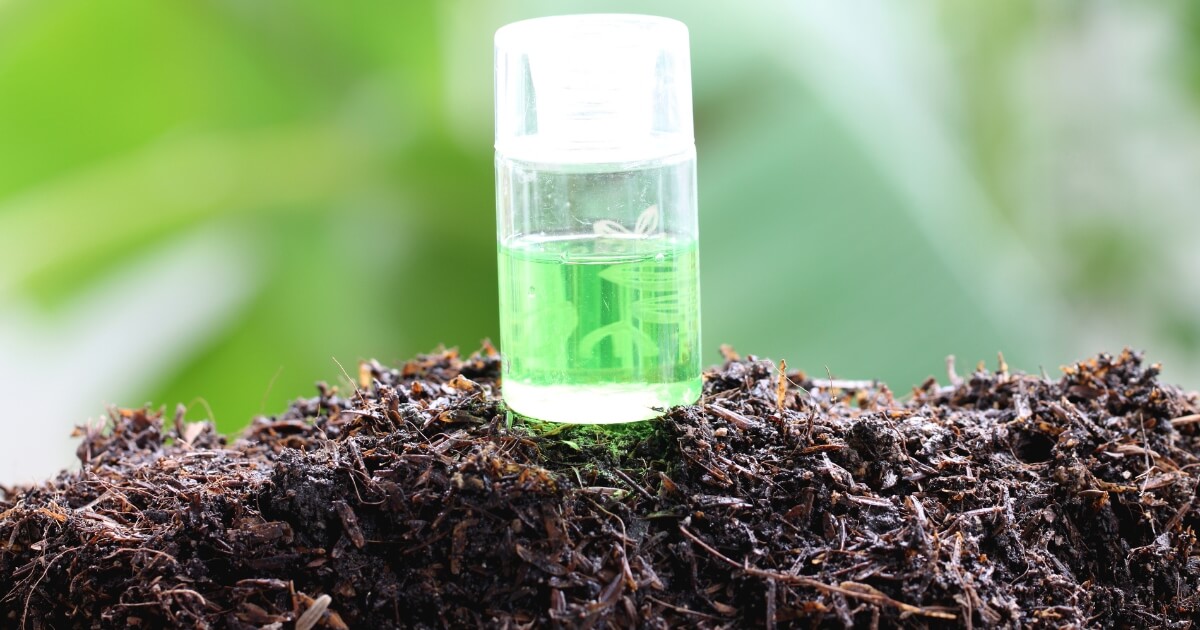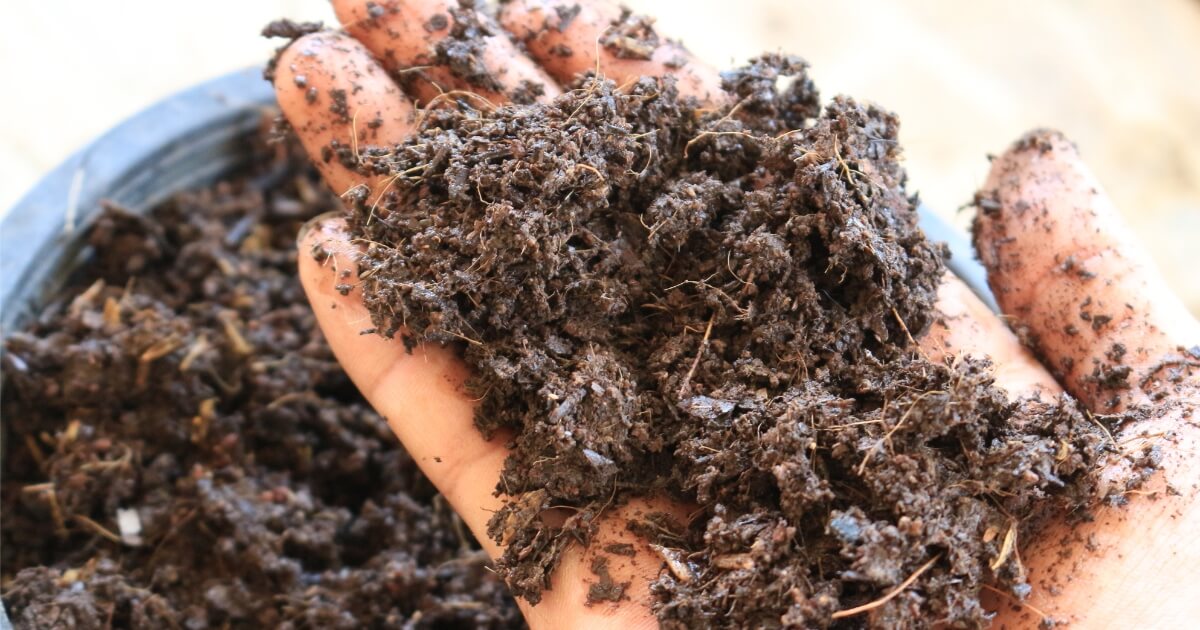Is it true you can safely compost weeds you pull from your garden?
The answer is yes when you know how to avoid common problems when composting weeds.

To learn how to compost weeds correctly, I put together this guide where I discuss the pros and cons of putting weeds in compost, what to watch out for, and the steps on how to compost weeds to prevent regrowth.
It’s very satisfying to recycle weedy yard waste and turn it into a free compost that can help your garden look amazing, so keep reading to learn how!
Can You Put Weeds In Compost?
While it’s technically acceptable to put weeds in compost, doing it wrong creates the risk of having those weeds resurface months later when you apply that compost to your garden.
This concern makes many people shy away from attempting to compost weeds because they are unsure of the right way to handle them.
Using the best composting system, prepping your weeds, and knowing the tricks to kill off those troublesome seeds and roots is the key to successful weed recycling.
Pros And Cons Of Composting Weeds
Some gardeners may find the task of composting weeds more trouble than its worth, so let’s take a look at the pros and cons, so you can decide if it merits the effort.
Pros:
- Reduces waste going to landfills, which is great for the environment
- Adds “green” nitrogen ingredients to your compost to keep it working efficiently
- Recycles the nutrients in weeds and brings them back to your garden soil
Cons:
- Weeds can regrow in your compost pile or later in your garden if you don’t “treat” the weeds to prevent it
- You need to be running a hot compost system you often turn to kill off seeds
- Takes time to pre-treat weeds before adding them to compost
Things To Keep An Eye On When You Add Weeds To Compost
Mature Seeds And Pods
It’s essential to keep a watchful eye out for weeds heading to the compost that has gone to seed.
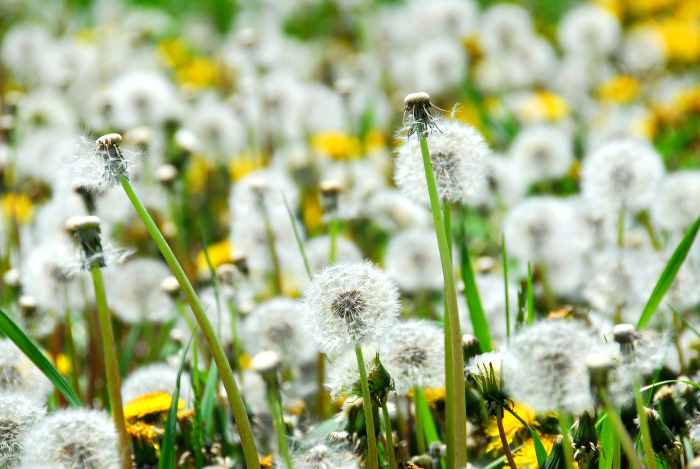
If those dandelions you pull no longer have yellow heads, but fluffy white ones, it may be best to throw them in the trash and keep those seeds out of your compost.
Even “good” plants like flowers and vegetables may have seeds that will survive and grow in your compost.
Unless you like random tomatoes popping up amongst your intentional garden plantings, you’ll have to either send seedy fruits and vegetable scraps to the trash or make sure you take the time to deal with them correctly at compost time.
Roots And Stems
The root system of some weeds can linger dormant, yet alive, in compost, and take off again once you spread that compost in your garden or planter beds.
Some plants people find troublesome to keep under control, like ivy, are also an issue since they can regrow from many parts of the plant you add to the composter.
If you are determined to recycle even seedy weeds without worrying about regrowth, then you must follow the steps in the how-to section below for both hot and cold composting systems.
How Long It Takes For Weeds To Decompose?
Weeds will decompose just as quickly as other plant matter you add to your composter. On average, expect weeds to break down fully within six to eight months.
The better you maintain your compost, with the proper ratio of brown and green ingredients, adequate moisture and heat level, and regular turning will increase the speed in which weeds decompose.
How To Compost Weeds
For the most part, composting weeds is much like any other plant matter, once you get past the first step.
Step 1 – Gather The Weeds And Decide How To Treat Them
You can safely add most annual weeds to your compost pile before they are fully mature and set seed. For weeds that have seeds, you need to destroy their capability to grow.
Hot and cold composting methods require different strategies to prevent annoying weed regrowth.
Hot Composting
You need to keep hot compost at least 145-degrees Fahrenheit to kill any seeds and roots. Your compost temperature should stay consistent for several weeks, which you can help by turning the pile or bin when it drops below 145 degrees.
Having a quality compost thermometer is very helpful to accomplish this task.
Cold Composting
The easiest way to deter issues is to not add weeds to compost that has gone to seed.
In reality, who has time to inspect every weed you are pulling from your planter beds for seeds? Not me!
Here are great methods to kill off seeds before adding them to your cold composting system. These tips are also great for people who tend to neglect their hot compost and want to avoid potential weed regrowth.
- Ferment weeds in water by submerging them into a large bucket and letting them rot out for a couple of weeks. Dump water and weeds into the compost pile when done. Warning: this process can get stinky!
- Dry weeds by spreading them out in the sun for a week, which won’t kill off the seeds, but will destroy the roots that could regrow in your compost.
- Put weeds into a black plastic garbage bag, tie it up, and let it bake in the sun for ten days, which should generate enough heat to kill seeds and roots.
Step 2 – Incorporate The Weeds Into The Compost Pile
Make sure you follow basic rules for balancing green and brown compost material. Just remember that freshly-pulled weeds are “green” material, and if you dried up your weeds until they are crispy, they are now “brown.”
Step 3 – Monitor Internal Compost Temperature
Make sure you keep the compost hot. Turn the pile often to increase aeration and spur fresh heat generation.
To ensure you are killing off all possible viable seeds, keep mixing up your compost regularly for several weeks. Thorough mixing will ensure all the material gets to spend some time cooking in the center where the temperature is the hottest.
When it comes to composting weeds, I prefer following a double-precaution route by soaking the seeds in a bucket before adding them to my hot compost bin. With this method, I have rich compost for my spring and summer gardening projects that remains weed-free.
In Summary
Composting weeds is not difficult, it just takes a little more time and attention to detail to keep the finished compost free of any viable seeds or roots that can cause havoc in your garden.
By following the steps I put forth in this guide, you can confidently recycle all your weedy yard waste with great success.
Now you can take those ugly, troublesome weeds and use them in your compost to create a beautiful, healthy garden without worry!
